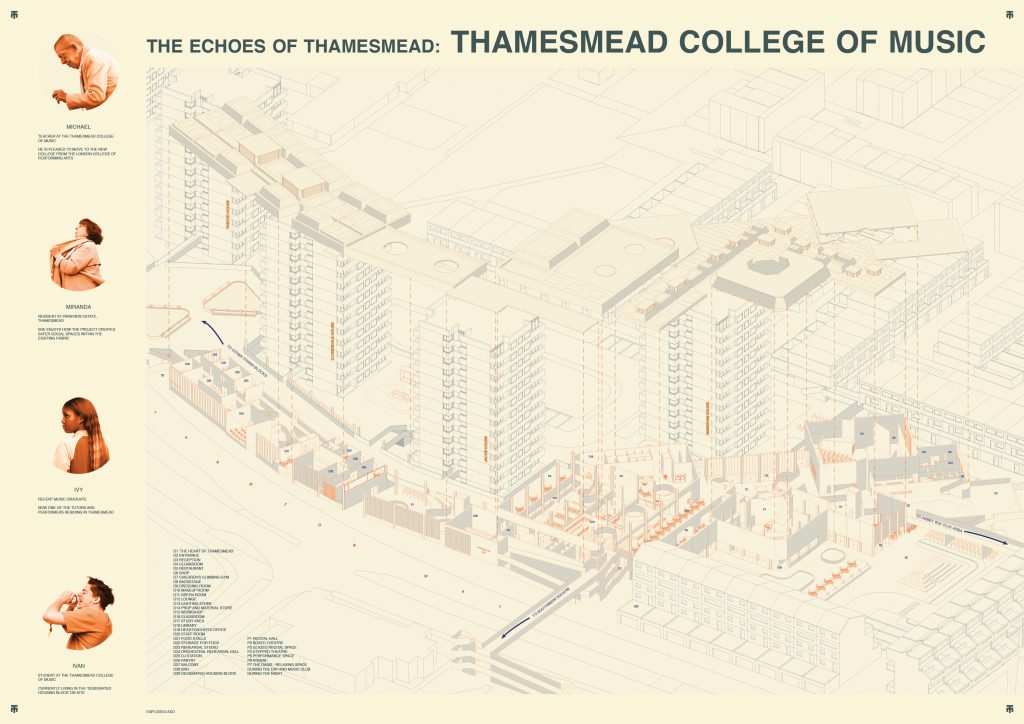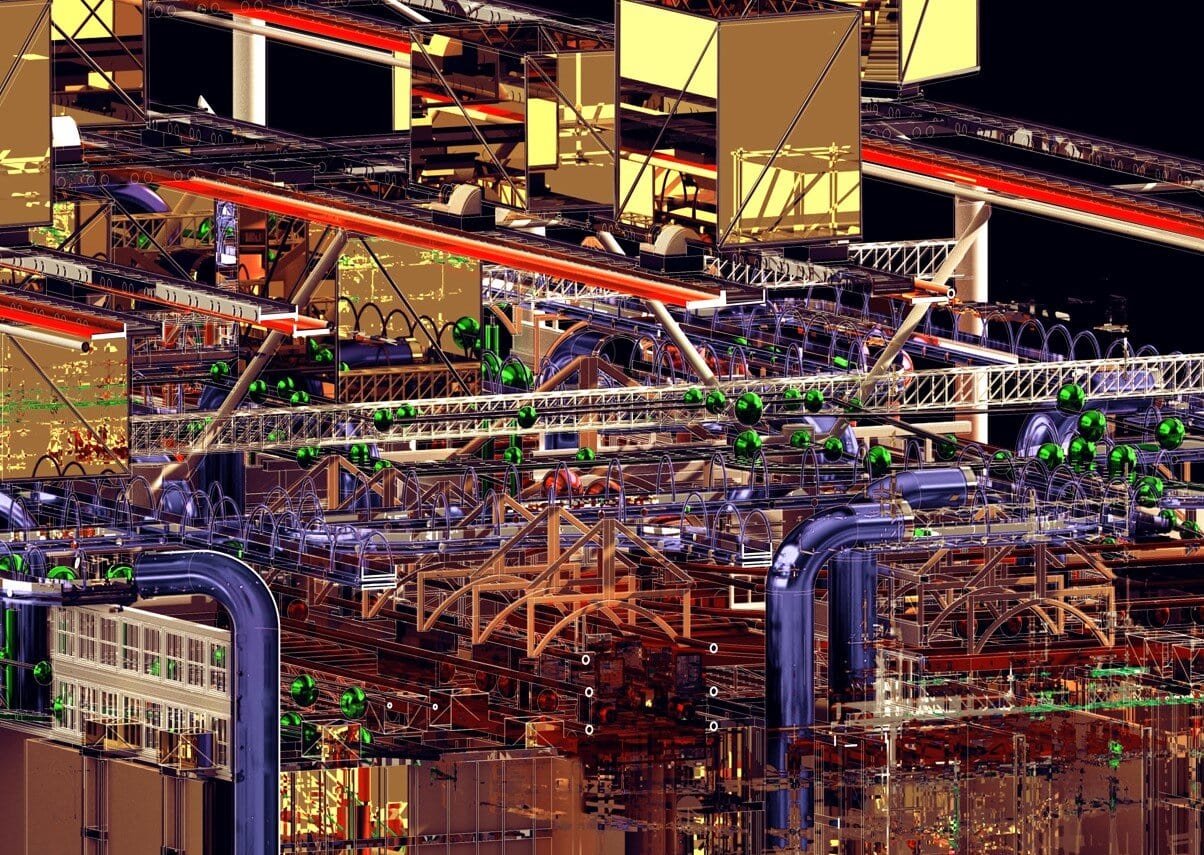Amplifying Possibility: Reimagining Thamesmead’s Soundscape through Retrofitted Corridors
Breathing New Life into Forgotten Structures
As the halls of the University of Nottingham prepare to celebrate the graduating class, Howard Lee stands out not merely for his academic achievement but for his compelling vision of how architecture can reinvigorate communities through sound. Graduating with distinction, Howard has channeled his parallel passion as an active musician into his architectural journey, posing an urgent question for the discipline: How can we reclaim architecture’s agency in shaping—and saving—our shared cultural landscapes?
Thamesmead, a South-East London district perennially on the cusp of renewal, sets the stage for Howard’s thesis project. As grassroots music venues vanish and youth music education faces extinction—propelled by the sobering projection that music A-level entries could flatline by 2033—the area stands as a metaphor for the country’s larger crisis. Howard’s project, nominated for both the prestigious Transformation & Reuse and Urban Design & Context Prizes, is much more than an academic exercise; it’s a prototype for reanimating forgotten spaces and reigniting community spirit through sonic and spatial ingenuity.
Resonating with Place: Music as Social Glue
Howard’s approach springs from two convictions: Every locality holds untapped creative potential, and acoustics are as crucial to architecture as light or structure. Drawing on his musician’s ear, he interrogates how soundscapes can transform spatial experience, particularly within the rigid geometries of Thamesmead’s underutilized concrete blocks and corridors.
Anchoring his thesis in the urgent need to preserve and foster musical culture, Howard proposes to retool existing built forms. His scheme celebrates Thamesmead’s own musical legacy—often overlooked amid narratives of urban decline. Spaces too often consigned to mere circulation—corridors, underpasses, landings—become active stages for community-driven performances. By stripping back partitions, layering acoustic strategies, and installing flexible partitions suggestive of folding screens or transparent veils, Howard turns the anonymous into the intimate, the inert into the activated.
Transformation through Acoustics: Architecture as Instrument
What distinguishes Howard’s design is its sensitivity to the way architecture shapes not just sightlines, but soundlines. The project weaves together the technical and the atmospheric: Surfaces are recalibrated for optimal reverberation and clarity, fostering environments where an impromptu jazz trio or youth choir can thrive alongside passing foot traffic, without either domain overwhelming the other.
In his revised corridors, acoustic panels echo traditional tuning techniques, informed by hands-on collaboration with local musicians. Window openings are reinterpreted as “sound portals” that allow music to spill across outdoor communal zones, blurring the boundary between performance and everyday life. Howard’s palette favors reclaimed materials—timber, soft textiles from decommissioned venues, and acoustic tiles—yielding not only sustainable construction but an authentic connection to place and past.
Urban Alchemy: Community, Context, and Continuity
But Howard’s intervention goes beyond mere technical upgrades. His core achievement lies in the strategic activation of latent communal spaces, grounding the design in conversations with local stakeholders. By forging partnerships with schools, music educators, and Thamesmead’s patchwork of community associations, the project aims to create durable opportunities for emerging talent while anchoring older residents to new forms of cultural engagement.
Each retrofitted site operates on a spectrum: rehearsal rooms can double as after-school lounges; street-facing alcoves transform into open-mic forums. The flexibility embedded in the scheme directly responds to the instability facing local culture—the loss of informal venues and the rapid churn of property development. Howard’s interventions establish platforms where the next generation of Thamesmead musicians can find both mentorship and an audience.
A New Model for Urban Reuse
Howard’s work is emblematic of a wider movement in contemporary architecture, threading together preservation, adaptation, and social advocacy. The project’s dual recognition—nominations for both the Transformation & Reuse and Urban Design & Context Prizes—speaks to its nuanced balance: sensitive crafting of acoustic environments and an unwavering focus on the social realities of place.
Howard’s vision is at once modest and radical. Rather than imposing heroic new icons, he finds value in the careful tuning of the everyday. By remapping forgotten corridors into connective tissue for local culture, the project illustrates the latent power of small-scale interventions to seed systemic change—not just in Thamesmead, but in countless districts grappling with similar tensions between erasure and renewal.
Connecting with Howard: Collaborate and Continue the Conversation
In an era where the fate of music education appears more precarious than ever, Howard Lee’s architectural proposal offers hope and a practical blueprint. His work opens an ongoing dialogue—between designers and musicians, young and old, built environment and lived experience.
For those interested in exploring collaborations, mentorship, or simply continuing the conversation around transformative reuse and the role of sound in architecture, Howard is eager to connect. Reach out to Howard Lee on LinkedIn or via email at leehwhoward@gmail.com to become a part of Thamesmead’s reawakening, or to bring similar sonic possibilities to your own community.
Howard Lee reimagines not just the walls and corridors of Thamesmead, but how architecture itself can amplify opportunity, memory, and creative possibility. His project strikes a chord—a call to make room, both physically and culturally, for the music yet to come.







Add a comment